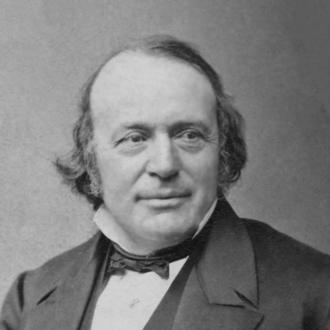We use cookies to improve the Bookmate website experience and our recommendations.
To learn more, please read our Cookie Policy.
To learn more, please read our Cookie Policy.
Accept All Cookies
Cookie Settings
Louis Agassiz (usually /ˈæɡəsi/ in English) (May 28, 1807 – December 14, 1873) was a Swiss-born American biologist, geologist, physician, and a prominent innovator in the study of Earth's natural history. He grew up in Switzerland and became a professor of natural history at University of Neuchâtel. Later, he accepted a professorship at Harvard University in the United States.Louis Agassiz was born in Môtier (now part of Haut-Vully) in the canton of Fribourg, Switzerland. Educated first at home, then spending four years of secondary school in Bienne, he completed his elementary studies in Lausanne. Having adopted medicine as his profession, he studied successively at the universities of Zürich, Heidelberg and Munich; while there he extended his knowledge of natural history, especially of botany. In 1829 he received the degree of Doctor of Philosophy at Erlangen, and in 1830 that of doctor of medicine at Munich. Moving to Paris he fell under the tutelage of Alexander von Humboldt and Georges Cuvier, who launched him on his careers of geology and zoology respectively. Previously he had not paid special attention to the study of ichthyology, but it soon became the great focus of his life's work.From his first marriage to Cecilie Bruan, Agassiz had two daughters in addition to son Alexander. In 1863, Agassiz's daughter Ida married Henry Lee Higginson, later to be founder of the Boston Symphony Orchestra and benefactor to Harvard University and other schools. On November 30, 1860, Agassiz's daughter Pauline was married to Quincy Adams Shaw (1825–1908), a wealthy Boston merchant and later benefactor to the Boston Museum of Fine Arts.In the last years of his life, Agassiz worked to establish a permanent school where zoological science could be pursued amid the living subjects of its study. In 1873, a private philanthropist (John Anderson) gave Agassiz the island of Penikese, in Buzzards Bay, Massachusetts (south of New Bedford), and presented him with $50,000 to permanently endow it as a practical school of natural science, especially devoted to the study of marine zoology. The John Anderson school collapsed soon after Agassiz's death, but is considered a precursor of the Woods Hole Marine Biological Laboratory, which is nearby.Within his lifetime, Agassiz had developed a reputation for a particularly demanding teaching style. He would allegedly "lock a student up in a room full of turtle-shells, or lobster-shells, or oyster-shells, without a book or a word to help him, and not let him out till he had discovered all the truths which the objects contained." Two of Agassiz's most prominent students detailed their personal experiences under his tutelage, Samuel Hubbard Scudder in a short magazine article for Every Saturday and Nathaniel Southgate Shaler in his Autobiography. These and other recollections were collected and published by Lane Cooper in 1917, which Ezra Pound was to draw on for his anecdote of Agassiz and the sunfish.An ancient glacial lake that formed in the Great Lakes region of North America, Lake Agassiz, is named after him, as are Mount Agassiz in California's Palisades, Mount Agassiz, in the Uinta Mountains, Agassiz Peak in Arizona and in his native Switzerland, the Agassizhorn in the Bernese Alps. Agassiz Glacier and Agassiz Creek in Glacier National Park and Mount Agassiz in Bethlehem, New Hampshire in the White Mountains also bear his name. A crater on Mars and a promontorium on the Moon are also named in his honour. A headland situated in Palmer Land, Antarctica is named in his honor, Cape Agassiz. A main-belt asteroid named 2267 Agassiz is also named in association with Louis Agassiz. In addition, several animal species are so named, including Apistogramma agassizi Steindachner, 1875 (Agassiz's dwarf cichlid); Isocapnia agassizi Ricker, 1943 (a stonefly); Publius agassizi (Kaup), 1871 (a passalid beetle); Xylocrius agassizi (LeConte), 1861 (a longhorn beetle).
more
fb2epub
Drag & drop your files
(not more than 5 at once)

